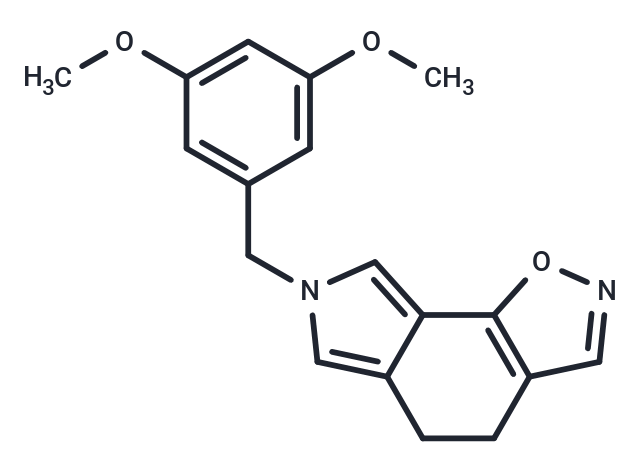Shopping Cart
- Remove All
 Your shopping cart is currently empty
Your shopping cart is currently empty

Tubulin polymerization-IN-36 is able to be used in cancer research, for example, lymphomas. Tubulin polymerization-IN-36 binds to the colchicine site of tubulin and inhibits colchicine binding, that is an inhibitor of tubulin polymerization with IC50 of 2.8 μΜ[1].

| Pack Size | Price | Availability | Quantity |
|---|---|---|---|
| 25 mg | $1,520 | 6-8 weeks | |
| 50 mg | $1,980 | 6-8 weeks | |
| 100 mg | $2,500 | 6-8 weeks |
| Description | Tubulin polymerization-IN-36 is able to be used in cancer research, for example, lymphomas. Tubulin polymerization-IN-36 binds to the colchicine site of tubulin and inhibits colchicine binding, that is an inhibitor of tubulin polymerization with IC50 of 2.8 μΜ[1]. |
| In vitro | Tubulin polymerization-IN-36 (compound 2e) exhibits notable biological activity by reducing lymphoma cell proliferation to below 50% at a concentration of 1 μM over 72 hours and demonstrating cytotoxicity against MCF-7 cells with an IC50 of 0.29 μM. It induces apoptosis and arrests VL51 and MINO cells in the G2/M phase at concentrations between 50 and 500 nM over 24 to 72 hours. Additionally, it inhibits colchicine’s tubulin binding by 88% at 5 μM. Cell proliferation assays on VL51, MINO, HBL1, and SU-DHL-10 cell lines over 72 hours with concentrations up to 10 μM result in 38%, 0.8%, 7.1%, and 30.5% proliferation at 1 μM, respectively, with IC50 values from 0.02 to 0.04 μM. Cell cycle analysis confirms its mechanism by arresting VL51 and MINO cells in the G2/M phase at 50 and 500 nM. |
| Molecular Weight | 310.35 |
| Formula | C18H18N2O3 |
| Cas No. | 2011784-91-9 |
| Storage | Shipping with blue ice. |

Copyright © 2015-2025 TargetMol Chemicals Inc. All Rights Reserved.